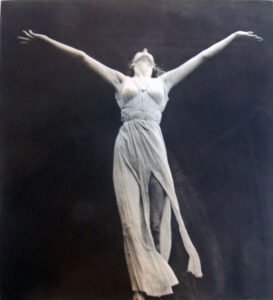14 Aug Dancing through cancer
When I was having radiotherapy in hospital, specialist yoga was one of the few things available that provided some mind, body, and headspace to help. I had one issue though, the treatment I’d had caused fibrosis in my chest and arm, and it was incredibly painful to put any bodyweight at all on my hands and arms. I did try, but I found that further work with physiotherapy and slower dance stretches, while standing, were much easier for me. Dance also helped me to regain a decent range of motion. After treatment, I could only just reach my arm up to shoulder height, but now this has improved substantially, and is all the way up to a ballet fifth position, and I’m on the way to a reasonable back bend. It’s been slow, but dancing regularly has, for me at least, been very effective.
I’ve been volunteering for two years now with the Wessex Cancer Trust in Bournemouth with a weekly dance session for cancer patients and their families. It’s now on Zoom every Wednesday at 11.15am.
The majority of participants are like me, in having breast, or other endocrine system related cancers and want to chill out, forget about their illness and stretch a bit. We are a diverse group. Many dancers have children and grandchildren who’ve been to dance classes, but until now they’ve never had the chance to experience it for themselves. One or two of our dancers did ballet as children, and it’s like re-entering a fantasy world, which was closed off to them as adults. We aim for an hour, but usually over-run, a bit as we’re so absorbed in moving to say a fabulous piece of music, like Debussy’s Reverie. And we like to chat about our experiences too!
Although the class is not provided as therapy, it provides cancer patients like those in our group, with some advantages in feeling better, and hopefully, staying well. There is some medical and academic research to support dance and wellbeing, but this could be improved – dance is woefully represented in research compared to other mind-body activities. It’s important as the fear of recurrence is always lurking in the backs of our minds, and people may still have side effects (joint pain, low energy levels and menopausal symptoms etc) lasting up to 10 years, due to long-term treatment with daily pills.
A study in the Journal, Supportive Care in Cancer, (Sturm et al, 2014) found that the mind, body and communication elements of a regular dance class helped energise participants, both mentally and physically. A further study in 2011 by Koch and Fischman, looked at dance as an interplay between movement, imagination, emotional expression and creative activity, and found that these new patterns of expressing ourselves carried through to greater wellbeing in everyday life. In June 2020, a study in JAMA Oncology found that even 30 minutes exercise a week, of moderate or intense activity, generated 31% reduction in mortality (I know the word is grim, but it’s good news on the exercise front!). That was a study based on 8002 patients over 45 years, tracked over a 5.3-year period (Gilchrist et al, 2020).
Our class usually starts with a pulse raiser, followed by some plies with gorgeous arm movements, and lyrical stretches with the chair as a barre. We also dance around the barre as a partner – glissades, bourees. We then move on to a couple of dances in the centre. The choice of music is important and our participants seem to prefer more contemplative music and movement.. We finish with a theatrical reverence and stretches to cool down, and a relax on the floor. Plus, a chat at the end. We’re usually on top of the world at that stage and the time has just darted past.. It’s always wonderful to do. At the beginning you wonder if you have the energy, yet by the end we’ve regained ourselves, feel stretched, light and buzzing.
If you or a family member/friend would like to join in, you’d be very welcome. Wear leggings, tee-shirt, socks. Bring lots of water. Check that you have some decent and level floor space around you and access to broadband and a laptop, iPad or phone. To join, email Natasha on natobin@icloud.com.
We meet on Wednesdays at 11.15 am. We’re a fun, friendly and welcoming group.
Bibliography/references
Gilchrist SC, Howard VJ, Akinyemiju T, et al., 2020. Association of Sedentary Behavior With Cancer Mortality in Middle-aged and Older US Adults. JAMA Oncol. 6(8):1210–1217.
Koch, S.C and Fischman, D., 2011. Embodied Enactive Dance/Movement Therapy, American Journal of Dance Therapy, 33, 57.
Sturm, I., Baak, J., Storek, B. et al., 2014 Effect of dance on cancer-related fatigue and quality of life. Supportive Care in Cancer 22, pp. 2241–2249.

Photo: Isadora Duncan – expressing freedom through dance. Source graphicarts.princeton.edu



No Comments